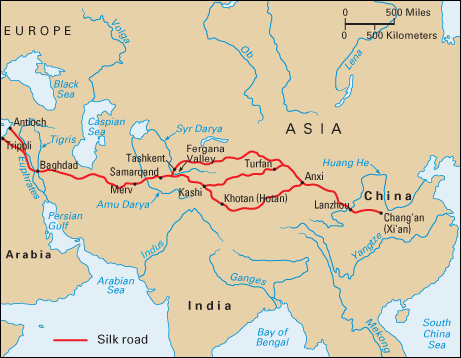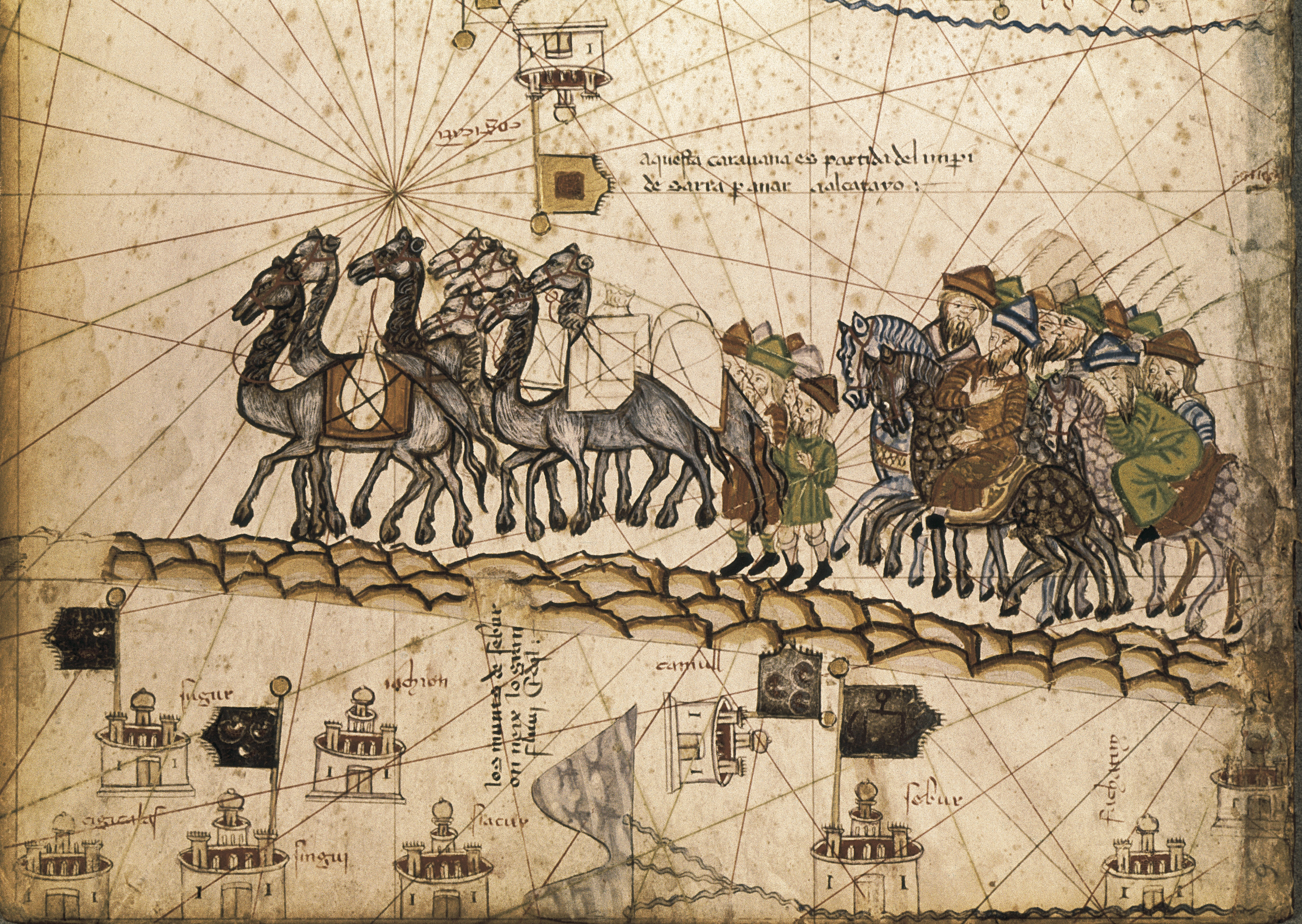Silk Road was a group of ancient trade routes that connected China and Europe. The Silk Road flourished primarily from the 100’s B.C. to the A.D. 1500’s. The routes stretched across about 5,000 miles (8,050 kilometers). They crossed mountains and deserts in central Asia and the Middle East between eastern China and the Mediterranean Sea.

The Silk Road got its name from the vast amount of Chinese silk carried along it. The Chinese learned to make silk thousands of years ago. They guarded the secrets of their processes. China was the only major supplier of silk until the A.D. 500’s. At that time, European countries discovered how to make the fabric.

The cities along the Silk Road provided food, water, and rest for travelers. They also offered goods for trade. Of these cities, Khotan (now Hotan, China) was famous for its jade. The region of Fergana in Uzbekistan was known for its powerful horses.
Camel caravans carried most goods across the dry, harsh regions along the Silk Road. By A.D. 800, traffic began to decrease as traders started to travel by safer sea routes. A final period of heavy use occurred during the 1200’s and 1300’s, when the Mongols ruled central Asia and China.

See also Kushan Empire; Lanzhou; Palmyra.
